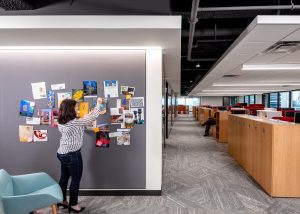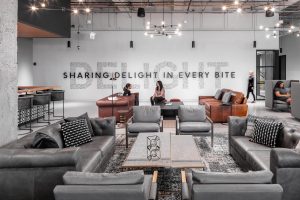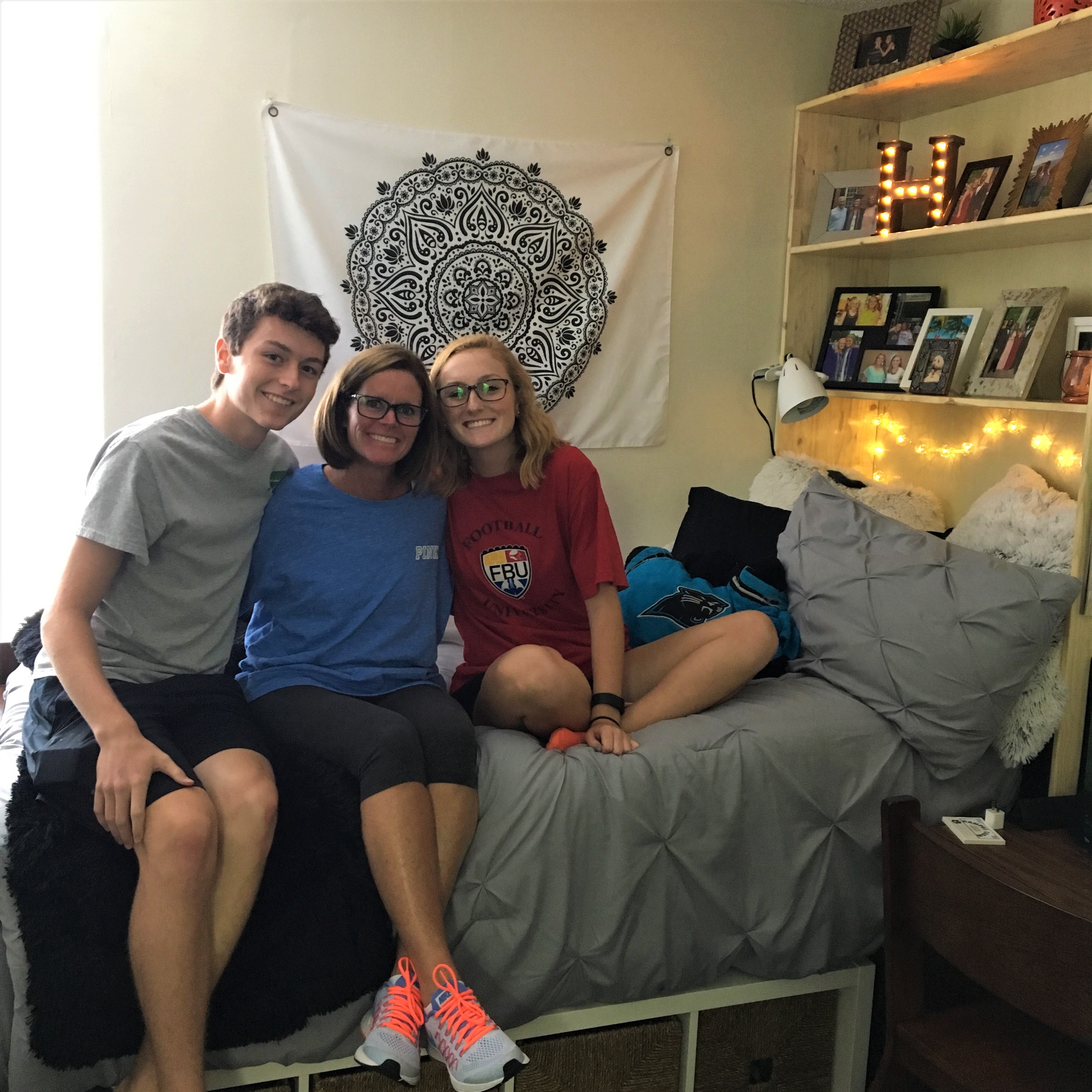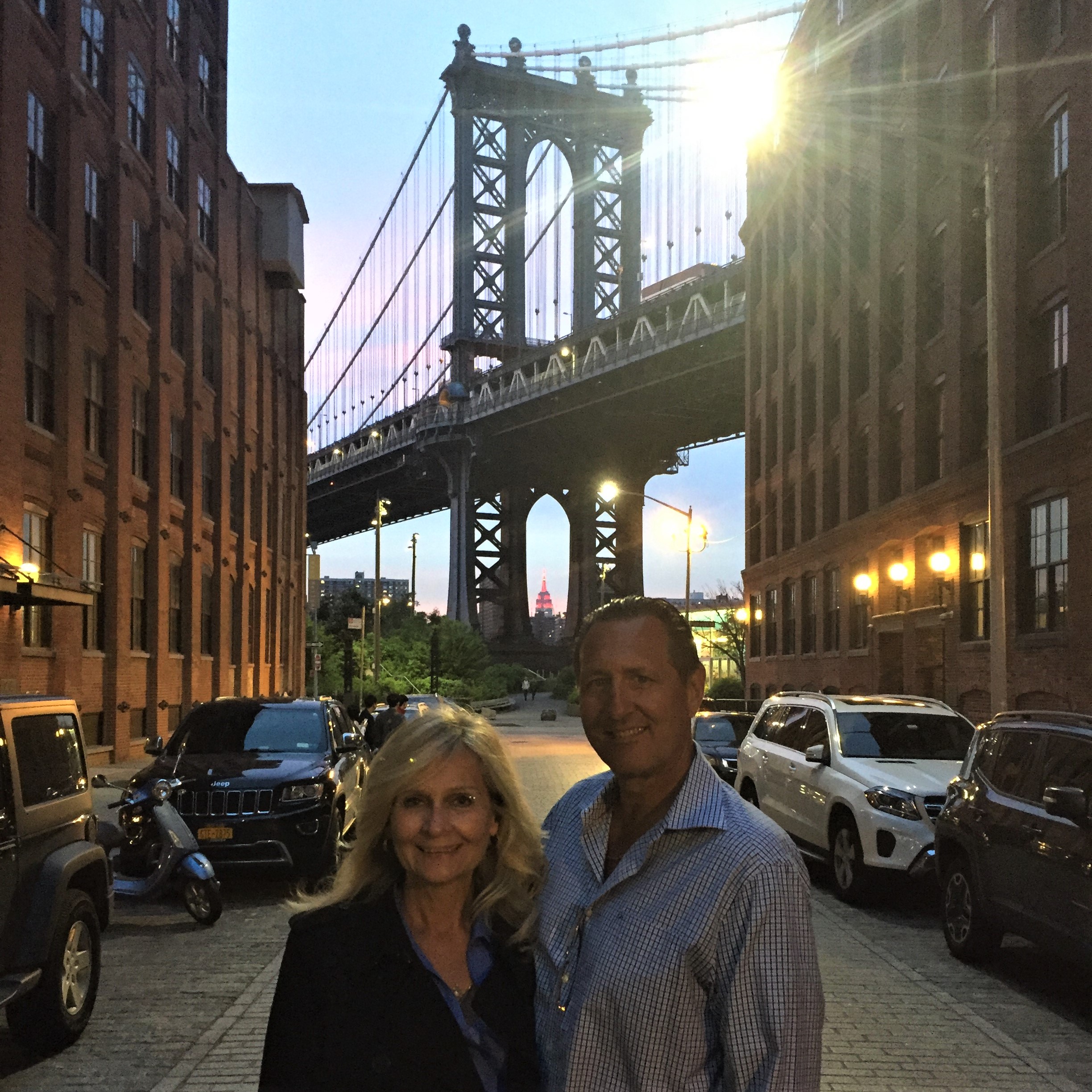Interior Design Magazine: Leveraging Data & Design to Drive Confidence in Returning to the Workplace
Interior Design Magazine highlights key trends from NELSON Worldwide’s Evolving Workforce Expectations study, focused on employees’ sentiments about returning to the office post-COVID-19. Read more here.
Business of Furniture: Leveraging Data & Design to Drive Confidence in Returning to the Workplace
Business of Furniture highlights key trends from NELSON Worldwide’s Evolving Workforce Expectations study, focused on employees’ sentiments about returning to the office post-COVID-19. Read more here.
Interface: Biophilic Design and Better Brain Health At Emory MCIEP
Numerous publications on biophilic design show the benefits to those who live, work and heal in those spaces. The Mild Cognitive Impairment (MCI) Empowerment Program (MCIEP) aims to support individuals experiencing early declines in memory, a condition that impacts nearly one out of every five Americans over the age of 65. Generous support from the James M. Cox Foundation and Cox Enterprises allowed the Emory Brain Health Center and the Georgia Institute of Technology’s Institute for People and Technology to create a space for the MCIEP that fosters patient comfort and independence while also offering flexibility for various studies, patient activities and other uses. With these priorities in mind, the MCIEP design team selected Interface flooring for its biophilic design properties and Evidence Based Design (EBD) performance characteristics that support the program’s mission. Read the full case study here.
Lodging: Sustainable Hotel Design in the Post-Pandemic Era
As the hospitality industry begins to ramp up following a year of navigating through the pandemic, now may be an opportune time for hoteliers to elevate efforts that address another global crisis: climate change. These crises may, in fact, be linked, according to a recent study published in the journal Science of the Total Environment, which examined global bat diversity and the emergence of SARS-CoV-1 and SARS-CoV-2.
Read the full article on Lodging.
Gurtimes: Led by destination spas wellness travel is booming
A relatively new segment of the industry, wellness tourism is now growing at a 50 percent faster rate than conventional tourism, with no signs of slowing down.
Cheryl Smith, Regional Practice Leader, NELSON Worldwide, adds, “Indoor spaces that encompass the use of natural materials, like wood, biophilic design such as living green walls and other indoor plant materials and daylight will improve the metal wellbeing of the guests by connecting them to nature. Read more with Gurtimes here.
Monroe County PA Courthouse
ThinkLab: Leveraging Data & Design to Drive Confidence in Returning to the Workplace
ThinkLab highlights key themes from NELSON Worldwide’s Evolving Workforce Expectations survey. The study measures employees’ feelings about returning to work and what employers can do to help them feel more comfortable. Read more here.
Evolving Workforce Expectations: Three Key Principles to Support Your Workforce
NELSON Worldwide’s Evolving Workforce Expectations study explores employees’ sentiments about returning to the office, and the impact COVID-19 has had on work environments and employee engagement. As part of our Evolving Workforce Expectations blog series, we’re taking a closer look at each of the key themes that stemmed from our research: communicate, activate, control, and support. Follow along to learn more about each theme and how your brand can pull off a successful re-entry strategy.
As most Americans continue to work remotely, or in-office on a limited schedule, workers have adopted new behaviors, and a different mindset when it comes to work-life balance. With research showing most want to return to the workplace, it is clear that a strong sense of support from employers is essential for employees to continue working successfully; remote or not.
Moving forward, the relationship between employees and employers will operate with a high degree of trust, dependent on three key principles. Giving employees the tools they need to stay engaged, updating work policies and the workplace environment to be more flexible, and finding ways to foster growth and value are the three keys to making employees feel more supported at work.
Empower Employees with Tools for Engagement
Before the pandemic, most companies operate under the assumption that offices were critical to productivity and community. Now, even though priorities have shifted, working remotely shouldn’t be a reason to halt these efforts. Thanks to ever-evolving technology, reinforcing company culture and creating community is still possible, even while working remotely.
- Build a virtual community, employers can create a ‘digital community wall’ to celebrate teammate success both in the office and remote
- Provide perks like subscriptions to exercise, meditation, or bike-sharing apps to build allegiance and reinforce culture
- Create rules and recommendations around the new work-life balance and encourage teammates to breathe or take a creative break during the day

Boston Consulting Group – Atlanta, GA
“Flexify” Policies and Workspaces
Employees are craving control in their personal lives and at work due to the limited amount of control they have surrounding the pandemic. Flexibility can offer them a sense of control they aren’t getting in other areas of their lives.
- Create an environment in the physical setting that can flex throughout the day to better support more flexible hours, consider both early risers and night owls
- Offer dedicated spaces for a wider range of purposes/needs like in-person meetings, virtual meetings, and even digital content creation like podcasts, webinars, and more
- Extend or stagger work hours could to aid in safe office capacity and usage

Ferrara Candy Company – Chicago, IL
Create a Multi-Sensory Setting
When combining a potential talent war with the flexibility and comfort of working from home, employers must make the physical office a sought-after destination again. Brands will need to differentiate themselves so that top talent not only wants to work for them but want to come into the office regularly.
- Take cues hospitality such as adding a signature scent or soothing sounds to make employees feel welcomed each day
- Consider an original food and beverage concept, either bringing in localized food offerings or even an on-site chef, so grabbing snacks and meals is satisfying and convenient for workers
- Offer a visually appealing environment that makes an impact, and is somewhere where employees can feel energized and inspired
- Learn from the retail industry by incorporating temporary activations or pop-ups to generate buzz and excitement and induce a feeling of exclusivity and something no one wants to miss out on

Nomad Tower – New York, NY
What matters most is doing what is authentic and genuine to the brand. Employees will sniff out deception immediately if the support feels forced or doesn’t align with the overall brand culture and values. Whether it’s new policies and programs, or new seating arrangements and office furniture, the goal is to help employees achieve success and have the most positive experience possible at work.
The Union: Possible Uses for the Courthouse in Nevada City Analyzed at Workshop
As Nevada County prepares for the future of its historic Nevada City Courthouse, NELSON Worldwide’s Civic & Justice leaders, David Crotty and Greg Lehman, along with their team, are at the forefront of evaluating its potential. In collaboration with the county and public stakeholders, they are conducting a “highest and best use” study to envision a viable, community-oriented future for the building.
Read more with The Union here.
Women of NELSON: Honoring Women In Architecture & Design
In honor of Women’s History Month, we’re connecting you with a handful of the women of NELSON who are boldly transforming our industry. Sharing their thoughts and perspectives, keep reading to learn more about what it means to be a woman in architecture and design and what inspires them each day:
Sheryl Moore-Marlette
Chief Operating Officer

What lessons and experiences can you share as a female leader?
Women are naturally empathetic beings and great communicators who know how to rally a team together. I encourage women to use those powers for good. Improve yourself but don’t change everything about yourself — be the best version of YOU.
If you could give one piece of advice to young female professionals, what would it be?
Transferable skills are critical to professional success because they empower you to do your job, whatever it is, well. They increase your odds of success at any level and are the foundation and engines of propelling you forward — no matter what you do or how high you want to climb.
What do you want to be remembered for?
I want to be remembered for being authentic, dependable, trustworthy and always following my moral compass.
Susan Martens
SVP, Human Resources

If you could give one piece of advice to young female professionals, what would it be?
Aim and push yourself to GROW — both internally and externally. Don’t underestimate yourself, know when to be tenacious and when to step back and re-strategize. Listen and learn – it’s not always about being the “loudest” voice in the room, you can still be heard. Respect diversity and differences and have a trusted colleague you can talk things through.
What are some of the traits that you admire most amongst other female leaders you’ve worked with?
Aside from what you would expect from leaders being focused and possessing a clear vision, additional traits I admire most are a strong sense of fairness, loyalty, decisiveness, honesty, and humility. A sense of humor also works!
Past or present, name three women that you would invite over for a dinner party?
Condoleezza Rice, Ruth Bader Ginsberg, and my mother. All extremely intelligent women and what I value is integrity and conversations based on the value of merits – great dinner party!
Heesun Kim
Design Director

When did you first become interested in design/architecture?
I was a very lucky girl. My father is a wood sculptor and my mother is a Korean traditional flower artist. I naturally grow up surrounded by art & flowers…and I like to express my vision through drawings & objects for as long as I can remember. However, I ended up falling in love with design more than fine art. I realized that while fine art is focusing on self-expression, design focuses on a user. Because of this, this path was more meaningful to me.
If you could give one piece of advice to young female professionals, what would it be?
Embrace being a woman. Be confident of who you are and express your point of view. Do not limit yourself professionally because you are EQUAL. Empower the women around you and encourage an inclusive culture. Along the way, you’ll contribute to making the world a better place for all, and most importantly yourself.
Andrea Brandt, RID, IIDA, LEED AP ID+C, CMP
Studio Director

When did you first become interested in design/architecture?
I had planned to be an art teacher. However, I had a class in Home Economics my junior year in high school that piqued my interest in decorating…yes, decorating.
I went on a few campus visits and while at Iowa State University I accidentally found myself in the College of Design (Arch, ID, LA, GD, ID, RP, & Arts). I came back and visited the “shop” teacher and said, “can I take a side class in drafting instead of sitting in study hall?” I enrolled in Interior Design in 1981 and never looked back.
What lessons and experiences can you share as a female leader?
Transparency and vulnerability are necessary.
If you are going to pull up a chair, you need to be present.
Focus on elevating others.
Past or present, name three women that you would invite over for a dinner party?
“Nothing is worth more than laughter. It is strength to laugh and to abandon oneself, to be light” – Frida Kahlo
“Fight for the things that you care about, but do it in a way that will lead others to join you.” – Ruth Bader Ginsburg
“The next decade cannot be a decade of confrontation and contention. It cannot be East vs. West. It cannot be men vs. women. It cannot be Islam vs. Christianity. That is what the enemies of dialogue want.” – Benazir Bhutto
Cheryl Smith, AIA LEED AP
Director

When did you first become interested in design/architecture?
It was in my genes. As a child, I loved to draw and build things with my father and I remember going for drives with my parents to look at new buildings. It’s what I knew and loved to do. My father was an entrepreneur and construction owner; I learned a lot from him about the construction business and the development world. I also learned from my mother, who was the tastemaker of the family, how to design and become a leader in the community. I think that I found the best of both worlds because as an architect, I have a desire to create wonderful places for people, but also understand how projects get built that contractors can relate to.
If you could give one piece of advice to young female professionals, what would it be?
Get involved, especially with community groups, and own what you are doing. As a young designer, this is an excellent way to find mentors and as you gain more experience, it provides opportunities for you to become a mentor to others. In college, I became involved in the Architecture in the Schools program where an architectural student is paired with an architect to teach grade school children about architecture and the built environment. After graduating from college, I became an ACE Mentor and eventually joined the ACE Mentor Board. The experience becomes both a humbling and rewarding part of the growth of your career.
Chen Hui Spicer, NCIDQ
Southeast Global Solutions Regional Design Leader

When did you first become interested in design/architecture?
From a young age, my childhood dream was to become a famous artist (or die trying!) For a while, I knew I wanted to be a Fine Arts major in college but ultimately I decided that Interior Design was the right path financially. For me, I loved using art to express myself and enjoyed the ability it gave me to share my emotions beyond just words.
What lessons and experiences can you share as a female leader?
My advice is to always be supportive of other women. Also, be strong and bring your best self at all times. The positive energy that you give the world will come back to you.
When I was in college I took a Communications class and the one quote that has always stuck with me reads: “everyone that you touch in your life, they take a little piece of you with them”.
What do you want to be remembered for?
I want to be remembered for always bringing the best version of myself forward, embracing different perspectives, and being part of the greater change that pushes us forward.